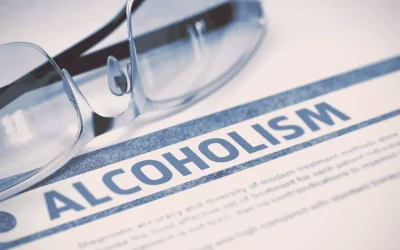While anyone can develop rhinophyma, it’s most commonly reported in white males, especially over age 50. Experts theorize that androgenic hormones found in males may trigger rhinophyma. The shoulders and chest are also susceptible to looking more flushed or red after drinking alcohol.
Serenity Lane Provides Compassionate Addiction Treatment for Alcohol in the Pacific Northwest
Chronic alcohol consumption can lead to the expansion and dilation of blood vessels in the nose, resulting in increased blood flow and the characteristic discoloration. Additionally, alcohol’s impact on the immune system and liver function can contribute to the development of vascular abnormalities and inflammation in the nose. When you consume alcohol excessively, it causes vasodilation, which is the widening of blood vessels, including those in your nose. This increased blood flow and dilation of nasal blood vessels can make them more fragile and prone to rupture, resulting in nosebleeds.
Alcoholic Nose (Rhinophyma): The Real Cause, and How to Treat It

This phenomenon, often referred to as “alcoholic nose” or “drinker’s nose,” is characterized by the dilation of blood vessels and the appearance of a purplish hue on the nose’s surface. Another side effect that is generally connected to excessive consumption of alcohol is an alcohol red nose. Popularly known as “alcoholic nose,” the condition is when someone develops a red, enlarged, bulbous-looking nose. It is commonly believed that the alcoholic red nose stems from alcohol abuse or chronic addiction. Someone who has a bulbous, swollen red nose may suffer from incorrect judgments and assumptions about their character and substance use habits. While “alcoholic nose” is not a medical condition requiring treatment, rhinophyma can be treated.
Oral & Topical Antibiotics
However, a scientific study that came out in 2015 at the University of South Florida Morsani College of Medicine dismantled the theory that alcohol abuse and alcoholic nose are connected. While some foods are broken down in the intestines, others are digested in the stomach. Alcohol does not need to pass through the digestive tract in order to be digested; rather, it is absorbed directly into the blood stream. It’s crucial to seek support from a trusted network of friends, family, and professionals who can provide ongoing guidance and encouragement throughout your journey to sobriety.
Does Excessive Alcohol Use Cause Rhinophyma?

While it’s true that alcohol use may trigger rosacea flare-ups, this does not mean that every person with rosacea will automatically develop rhinophyma. It is an extreme side effect only experienced by a small percentage of people who suffer from why do alcoholics have big noses rosacea. That being said, someone who already has rhinophyma may find their condition is worsened by drinking alcohol. The best way to combat the physical symptoms of alcoholism is to address the underlying addiction before it becomes too late.
Snorting Alcohol: Effects, Risks, Safety Tips, and More – Healthline
Snorting Alcohol: Effects, Risks, Safety Tips, and More.
Posted: Fri, 19 Mar 2021 07:00:00 GMT [source]
Please read on to learn all you need about alcoholic nose and the connection between alcohol addiction and skin conditions. If you live in Brooksville, Florida and need professional addiction treatment to help you stop drinking alcohol, Springbrook Behavioral Hospital can help. We are a mental health rehab center that specializes in supporting adults with co-occurring disorders, including alcohol use disorder. While the exact mechanisms behind the development of a purple nose in alcoholics are not fully understood, several factors contribute to this phenomenon.
Treatments for rhinophyma or “alcoholic nose”
- You deserve the opportunity to live a life free from addiction and the bondage it can create.
- Some alcohol abusers suffering from jaundice will also experience darkening of the skin around the eyes, mouth, and legs.
- However, there are contradicting beliefs that attribute other causes for the reddening of the nose and the structure of the nose noticeably changing.
- Despite these facts, the known cause of rhinophyma remains a mystery today.
